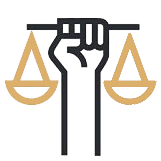Did you know over 95% of personal injury cases settle before ever reaching a courtroom ? Understanding the personal injury settlement phases isn’t just for lawyers—it's the key to getting what you deserve after an injury case . This comprehensive guide breaks down every stage, shows you how injury lawyers navigate the process, and arms you with the insights to protect your interests and maximize your recovery.
One Surprising Fact: Over 95% of Personal Injury Cases Settle Before Trial
The vast majority of personal injury cases never make it to a judge or jury. Instead, settlements are reached through strategic discussions, research, and negotiation. Why? Because the risks, costs, and time associated with a trial often outweigh the benefits for both plaintiffs and defendants. By recognizing this reality, injury victims can focus their efforts where it matters: understanding the negotiation-driven process and partnering with the right injury lawyer to steer toward the best outcome.
Each personal injury settlement journey includes distinct “phases”—from the first conversation with your personal injury lawyer to the final payout. Being aware of these phases prepares you to avoid common missteps and to cooperate effectively during your injury claim . Knowing how personal injury law really works will help you gain peace of mind and strategic leverage, rather than feeling lost or left in the dark.

Why Understanding Personal Injury Settlement Phases Empowers Injury Victims
- Why settlements happen: Trials are time-consuming, unpredictable, and expensive. Both sides often want certainty and closure, leading to settlements.
- Understanding phases: A personal injury settlement involves consultations, evidence gathering, negotiations, and (rarely) litigation. Each phase impacts your compensation.
- Knowledge is power: Understanding this journey allows claimants to work confidently with injury lawyers , make informed choices, and avoid lowball offers.
What You'll Gain From Learning About Personal Injury Settlement Phases
- Clear explanations for every phase of a personal injury case
- Practical tips for collaborating with your personal injury lawyer or injury attorney
- Insider insights into personal injury law that help you protect your rights throughout the injury claim journey
Overview: The Full Journey of Personal Injury Settlement Phases
| Phase | Key Activities | Relevant Laws/Principles |
|---|---|---|
| Initial Consultation | Meet with injury lawyer ; assess viability of injury claim ; review accident | Statute of limitations; consultation privilege |
| Evidence & Investigation | Collection of medical records , police reports, witness accounts | Burdens of proof; duty of care; medical privacy laws |
| Insurance Notification | Contact insurance company and open claim | Insurance code; required notifications |
| Damage Assessment | Calculate medical bills , lost wages, pain and suffering | Types of damages—special, general, punitive |
| Negotiation | Exchange settlement offers; possible mediation | Good faith negotiation; mediation statutes |
| Litigation (if necessary) | File injury lawsuit ; trial prep; court hearings | Rules of civil procedure; evidence standards |
| Resolution & Payment | Final agreement; payout from insurance company | Release of liability; payment timelines |

Initial Consultation: The First Step in the Personal Injury Settlement Phases
Everything starts with an initial consultation—a conversation where you and a personal injury lawyer (or injury attorney ) lay the foundation for your injury case . This step is more than a meet-and-greet; it’s where the potential merits of your injury claim are analyzed, statutes of limitations are checked, and a strategy takes shape. Here, your chosen professional assesses your evidence, such as medical records and accident reports, aligning your situation with relevant injury law and identifying possible hurdles or strengths.
You'll get a chance to ask questions and gauge the expertise of your injury lawyer . You may be advised how to document continuing medical treatment , preserve evidence, and avoid mistakes that could undermine your personal injury case later. Most importantly, the initial consultation (often a free consultation ) sets expectations around process, costs, anticipated timelines, and next steps in your journey through the personal injury settlement phases .
Role of the Personal Injury Lawyer and Injury Attorney in Your Case
A personal injury lawyer is your advocate, strategist, and protector through every phase. Their primary role in the initial consultation is to explain your rights, outline injury laws , and help you avoid common legal traps. By working with an experienced injury attorney , you benefit from their understanding of complex injury law and their ability to build a persuasive narrative that holds up during negotiation or—if necessary—in court. Their guidance is crucial in evaluating whether your personal injury case is worth pursuing and setting realistic expectations about value and duration.
"A single conversation with a qualified injury lawyer can set the tone for the entire injury case."
Building Your Personal Injury Case: Investigation and Evidence
Once you agree to work together, building the personal injury case moves into high gear. This phase is all about gathering powerful evidence that supports your injury claim . Your injury lawyer initiates investigations—interviewing witnesses, requesting surveillance footage, analyzing the accident scene, and laying the groundwork for a robust claim against the at-fault party or insurance company . The more thorough this foundation, the stronger your negotiation leverage.
For accident victims, supporting their attorney’s work means keeping detailed notes, saving all correspondence, and closely following up on required documents. This legwork becomes invaluable during the settlement negotiation process and, if needed, in court. With a well-prepared file, your chances of achieving a favorable settlement rise considerably.
Gathering Medical Treatment Records for Personal Injury Lawsuit
Detailed, up-to-date medical records are often the backbone of any credible personal injury lawsuit . These records validate the extent of your injuries and provide clear causation between the accident and your need for medical treatment . Through ongoing collaboration, your personal injury lawyer ensures that no bill, procedure, or therapeutic note is left out, making it more difficult for an insurance company to dispute your injury claim .

Fact-Finding: The Foundation of a Strong Injury Claim
Beyond medical treatment records, your injury attorney compiles police reports, photographs of the accident scene, and credible witness statements. This collective evidence builds credibility and can encourage an insurance company to engage in sincere settlement negotiation. Key documentation can include:
- Comprehensive police reports detailing circumstances and fault
- Written or recorded witness statements
- Guidance and case theory developed by your personal injury lawyer
- Applicable insurance company documentation and correspondence
Notifying the Insurance Company: Opening the Personal Injury Claim
The next pivotal step is notifying the appropriate insurance company to formally open your personal injury claim . Timely notification is required by most injury laws and must meet specific policy deadlines. Early, precise reporting can help avoid technical denials, prevent unnecessary delays, and start the process of negotiation much sooner.
Your injury lawyer may handle this communication directly to shield you from possible misstatements and to ensure that the injury claim is positioned for success. Reporting to the insurance company generally includes a brief overview of the incident, your injuries, and the anticipated documentation you’ll provide. The insurance company will then assign an adjuster to your case, begin investigating, and potentially reach out with preliminary settlement discussion.
Role of Insurance Company in Personal Injury Settlement Phases
Insurance adjusters play a central role in the pace and success of your personal injury settlement . They interpret policy terms, verify coverage, evaluate responsibility, and estimate potential payouts. Your personal injury lawyer interacts strategically with adjusters to manage expectations and guide the claim to a fair conclusion.
| Response Factor | Injury Claim (Pre-Lawsuit) | Personal Injury Lawsuit |
|---|---|---|
| Adjuster’s Role | Negotiates settlements; controls initial offers; investigates accident | May involve legal team; follows legal discovery protocols |
| Communication | Handled by you or your lawyer; less formal | Structured via attorney channels; subject to court rules |
| Timeline | Faster (weeks to months) | Longer (months to years) |
| Payout Process | Direct settlement check | Court-ordered payment or structured settlement |
Calculating Damages During Personal Injury Settlement Phases
Determining the value of your personal injury case is a nuanced process. During this phase, injury attorneys work with medical providers, economists, and sometimes vocational experts to fully calculate your economic and non-economic losses. The goal is to ensure that every incurred expense and future loss is identified and factored into negotiations with the insurance company .
Your personal injury lawyer will advise on common damage categories under personal injury law , and how to fairly represent loss of income, ongoing medical treatment costs, and the impact that pain or permanent disability may have on your quality of life.
Assessing Medical Bills, Pain and Suffering, and Property Loss
The core of a settlement demand includes:
"Personal injury settlement phases require careful calculation of economic and non-economic damages."
- Special damages: Objective losses—such as medical bills, lost wages, and property damage—directly linked to the injury event
- General damages: Subjective losses—like pain and suffering, emotional distress, or diminished enjoyment of life
- Punitive damages: Rare, but sometimes awarded when the at-fault party’s conduct is especially egregious, according to personal injury law
By thoroughly quantifying all types of damages, you and your lawyer position your personal injury claim for success and set a foundation for credible settlement negotiation .
Negotiation: The Heart of Personal Injury Settlement Phases
Once evidence and damages are established, the action shifts to settlement negotiation —the central phase in most personal injury claims . Here, your personal injury lawyer (or injury attorney ) crafts persuasive “demand letters” and manages the back-and-forth with the insurance company . Your case’s strength now depends on documentation, clarity, and the negotiation skills of your legal team. Understanding how offers are made, why some are rejected, and when litigation might become necessary is crucial.
Most personal injury cases resolve during this negotiation stage. A fair offer leads directly to the payment phase, while a contested claim may advance to court.
Settlement Negotiations and When to Pursue a Personal Injury Lawsuit
- Opening offers: Insurer presents a first settlement amount, often lower than expected
- Demand letters: Your attorney responds with a detailed, well-supported counter
- Counter-offers: Both parties adjust positions based on additional evidence or legal arguments
- Mediation: Neutral third party may assist if negotiations stall
- Final agreements: Settlement is accepted, or decision is made to file a lawsuit

Litigation: Moving to Court When Settlement Fails
When negotiations can’t produce a fair result, a personal injury lawsuit is the next phase. Filing a lawsuit formalizes the dispute and signals to the insurance company that you’re prepared to let a judge or jury resolve the matter. This step requires additional time, costs, and patience, but sometimes it’s necessary to achieve full justice under injury law .
Your personal injury attorney will guide you through filing, discovery (exchanging evidence), depositions, pre-trial motions, and—if needed—a trial. Litigation shifts much of the control from insurance adjusters to judges and legal procedures. It’s often used strategically to push for settlement even as the court process unfolds.
Personal Injury Lawsuit Procedures and Legal Timelines
- Filing: Submit the formal injury lawsuit paperwork with the court
- Attorney’s role: Manage discovery, file motions, select expert witnesses
- Discovery: Both sides disclose evidence, take depositions, and sometimes revisit settlement negotiations
- Court dates: Attend hearings and possibly trial, awaiting the verdict or new settlement offer
Resolution and Receiving Compensation in the Final Settlement Phase
Once a settlement is reached—or a judgment awarded—the focus moves to compensation and closure. This phase ensures the claimant receives the money agreed upon, either in a lump sum or structured payout. The personal injury lawyer reviews the disbursement for accuracy, confirms all fees and liens are paid, and coordinates delivery to the client.
Receiving your compensation is usually the last step. Most clients feel a tremendous sense of relief, closure, and gratitude having been successfully guided through each stage of the personal injury settlement phases .
How Settlements Are Paid: From Insurance Company to Personal Injury Victim
Payments are typically made by the insurance company and can involve direct bank deposits, mailed checks, or, in rare scenarios, periodic structured payments. Your injury lawyer ensures all necessary paperwork, including releases and satisfaction of liens, is complete so your personal injury case ends smoothly and efficiently.

Key Factors That Influence Personal Injury Settlement Phases
- Severity of injury: Serious injuries often result in larger settlements but require longer negotiations
- Strength of evidence: The clearer the evidence, the stronger your position
- Insurance coverage: Settlement is limited by available policy amounts
- Expertise of personal injury lawyers : Skilled attorneys drive more favorable outcomes
Common Pitfalls in Personal Injury Settlement Phases and How to Avoid Them
- Delayed claims: Waiting too long can hurt your case or exceed the statute of limitations
- Inadequate documentation: Incomplete medical or accident records weaken your evidence
- Settling for too little: Accepting a low initial offer without negotiation leaves money on the table
- Ignoring medical advice: Failing to follow prescribed treatment undermines your injury claim
In this expert-led video, leading personal injury lawyers demonstrate how cases move through the essential phases, share negotiation strategies, and use real case examples to illustrate what works—and what to avoid.
People Also Ask: What is a typical amount of pain and suffering?
- Pain and suffering awards vary widely depending on injury severity, local injury laws , and impact on daily life
- In practice, amounts can range from a few thousand dollars for minor injuries to six figures or more in severe or permanent cases
- The insurance company uses formulas but is influenced by documented evidence, medical treatment, and lawyer advocacy

People Also Ask: How long do most personal injury cases take to settle?
- Average timelines vary, with simple personal injury claims settling in several months, while complex cases (involving severe injuries or litigation) may last one to three years
- Delays can occur if medical treatment is ongoing, evidence is missing, or negotiations stall
- Insights from experienced personal injury lawyers can help accelerate the process and anticipate roadblocks
People Also Ask: What is a reasonable settlement offer?
- A reasonable offer accounts for all actual medical bills , lost wages, pain and suffering, and long-term impact
- Your injury attorney compares your case to similar settlements and challenges lowball offers during the settlement negotiation phase
- Expert advice and comparison to jury awards guide you in accepting, negotiating, or rejecting offers

People Also Ask: What are the stages of a personal injury claim?
- Stage 1: Claim filing and initial consultation
- Stage 2: Evidence gathering and medical documentation
- Stage 3: Negotiation with the insurance company
- Stage 4: Litigation if no settlement is reached
- Stage 5: Settlement payout and closure of the injury case
FAQs About Personal Injury Settlement Phases
- What is the role of a personal injury lawyer? They guide, negotiate, and protect your best interests throughout every phase, increasing your chances of a full, fair settlement.
- What is the appeals process in a personal injury lawsuit? If the court decision is unfavorable, your attorney may file an appeal, but this adds time and complexity and is generally only used if strong legal errors are present.
- What should I expect from insurance companies? Delays, initial low offers, detailed documentation requests, but also eventual willingness to negotiate—especially when faced with skilled legal advocacy.
Watch top personal injury lawyers demonstrate the art of negotiation, showing how evidence, strategy, and persistence combine to achieve remarkable results for clients.
Tips for Collaborating With Personal Injury Lawyers Throughout the Settlement Phases
- Choose the right injury attorney: Seek experience, proven outcomes, and clear communication
- Communicate medical treatment progress: Keep your lawyer informed about every development in your recovery
- Track expenses for your injury claim: Save every receipt, bill, and pay stub, as every expense supports your case

Checklist: Documents You Need at Each Stage of Personal Injury Settlement Phases
- Initial consultation: Accident reports, photos, witness details, preliminary medical records
- Evidence gathering: Complete medical treatment records, expert opinions, repair invoices, correspondence with all parties
- Negotiation and settlement: Written settlement offers, insurance company responses, copies of all releases and agreements
Hear from real clients who’ve successfully navigated the personal injury settlement phases —what they learned, what they’d do differently, and the role their injury attorney played from start to finish.
In-Depth Look: How Injury Laws and Recent Changes Affect Personal Injury Settlement Phases
- Recent court decisions and legislative updates are shaping how negotiations unfold and the value of injury claims
- Some states are enacting damage caps or changing the statute of limitations impacting personal injury cases
- Successful settlements increasingly depend on staying informed and leveraging every advantage offered by evolving injury law
Expert Quote: Insight From a Leading Personal Injury Attorney
"Every phase in a personal injury case presents opportunities—and risks—that require skilled advocacy and client awareness."
Essential Takeaways on Personal Injury Settlement Phases
- Take early action to preserve your claim
- Rely on expert advice from experienced injury lawyers
- Leverage evidence for maximum leverage in settlement negotiations
- Be patient—negotiation takes time, but persistence leads to fair resolution
Ready to Take Action? Connect With a Personal Injury Lawyer Today
- Contact a trusted personal injury lawyer for a free consultation
- Gather your key documents and medical records in advance
- Prepare a list of questions about your personal injury case and possible outcomes
- Learn more: visit pugetsoundinjurylaw.com
Understanding the personal injury settlement process is crucial for anyone navigating the aftermath of an injury. To deepen your knowledge, consider exploring the following resources:
-
“How Personal Injury Settlements Are Structured” provides a detailed breakdown of each phase in the settlement process, from initial claim filing to the disbursement of funds. ( hoff-law.com )
-
“How The Personal Injury Settlement Process Works” offers insights into the timeline and critical steps involved in securing a fair settlement, emphasizing the importance of thorough investigation and negotiation. ( mcdougalllawfirm.com )
These articles will equip you with a comprehensive understanding of the settlement journey, empowering you to make informed decisions and collaborate effectively with your legal counsel.
 Add Row
Add Row  Add
Add 




Write A Comment